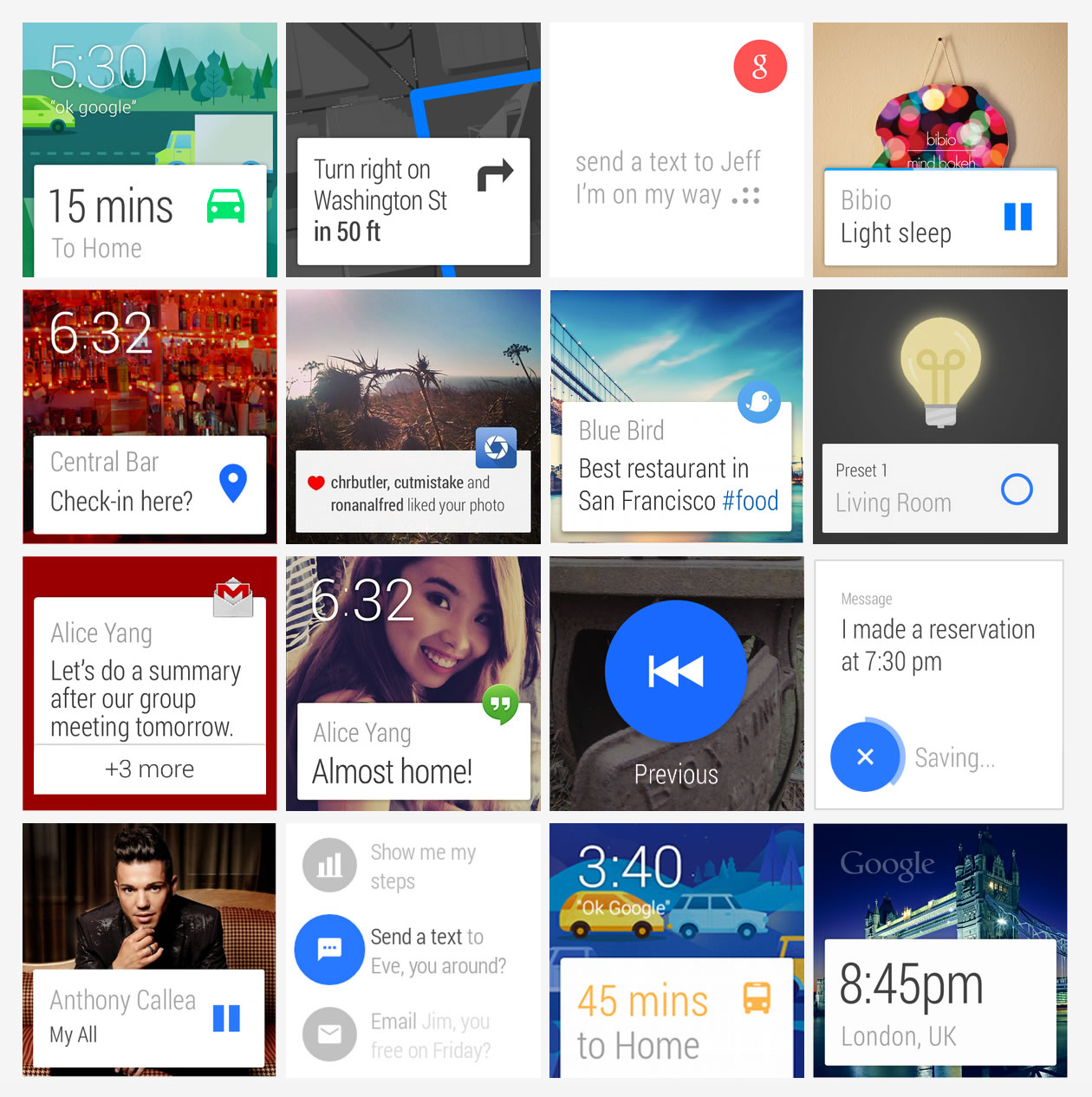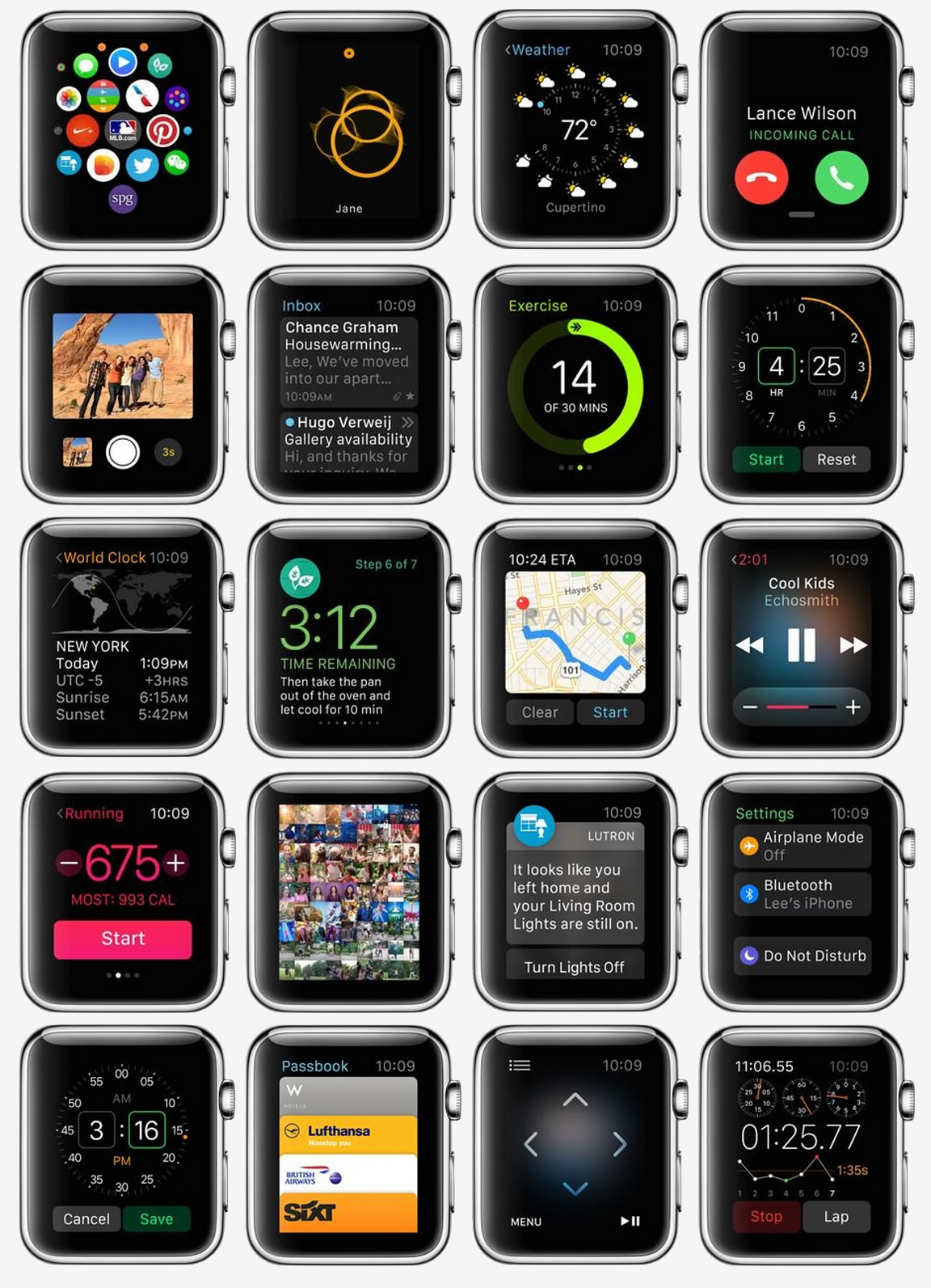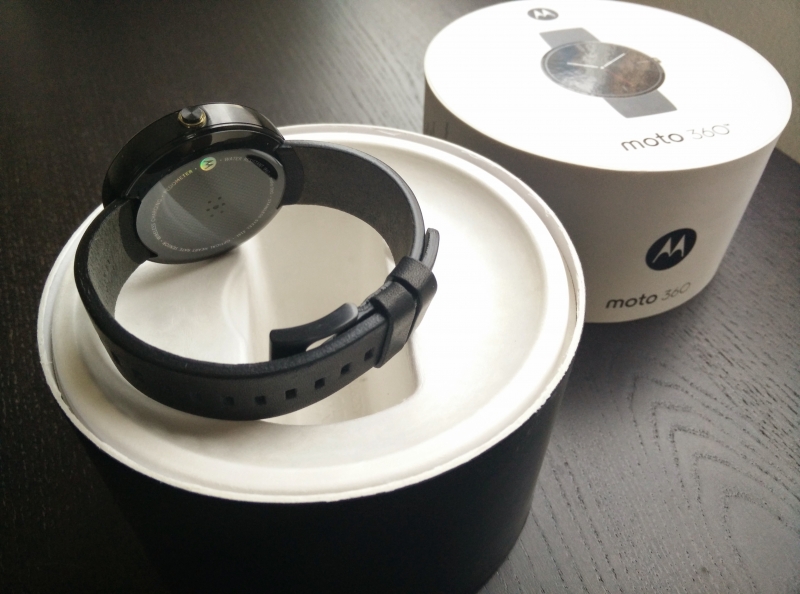I got a Moto 360 recently and so smartwatches are on my mind. Particularly, the difference between Google's Android Wear and Apple Watch. Of course, we don't have complete information on the latter, and Apple is bound to improve a few things from now until release – but we've seen enough to come to some conclusions.
Google's fundamental philosophy for the smartwatch diverges greatly from Apple's. Google wants you to use voice to perform actions whenever you can – when you tap on an Android Wear watch face, the only prompt you get is Google's command to "speak now." The list of actions and apps you can scroll through after come as secondary options.
Conversely, Apple is sticking with the paradigm it popularized on the smartphone – there's a homepage from where you access different apps. You use a finger to pick an app and when you're done, you can return to the homepage to pick another. Apple introduced the digital crown to make that easier in a smaller screen. Voice control is an afterthought, if it even exists.

Android Wear UI (above) vs. Apple Watch UI (below)

Google wants you to think about what actions you want done, and to just command it.
Apple wants you to think about which apps do what, match the app with the action, and then tap the buttons necessary to get the action done. It's a system that already feels tedious on the phone, and probably even more so on a small device like a watch. But it's also tried and true.
Jeffrey Yuwono is CEO and co-founder of Feecha, a hyperlocal news app for neighbourhoods. A Stanford MBA and Duke undergrad, Jeff writes insightful observations about technology once a day on his blog The Cornerplay and now on this weekly column on TechSpot.
Compare that to Google's OS: if you want to access a particular app on Android Wear, you can, but it's buried in a list of lists.
Whose approach is right? Long term, I would have to favor Google's. Short term, however, voice commands aren't quite ready for prime time. It mostly works, but when it comes to UI navigation you need it to work well all the time, not most of the time.
I shouldn't need to wonder what is the correct voice command – I should just say what I want and have the OS correctly understand it. Android Wear is not there yet, and that's a big issue.
The Xbox One had somewhat similar problems with the Kinect, and that's not turning out well for Microsoft. Google may have the right vision, but Apple may have the right execution to win early.
We'll see which wins.
